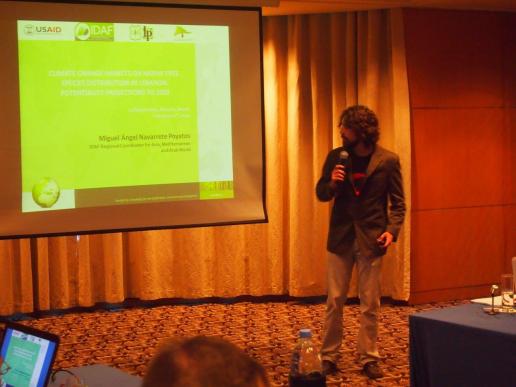









The Lebanon Reforestation Initiative (LRI), a project funded by the United States Agency for International Development (USAID) and implemented by the United States Forest Service (USFS), organized a roundtable discussion to review the findings of a recent study examining likely climate change impacts on selected native tree distributions in Lebanon.
The study includes ensemble projections under various climate change scenarios from present to 2050 for approximately 20 major tree species native to Lebanon, including cedar, juniper, pine, oak and others. The Spanish Center for Applied Research in Agroforestry Development (IDAF) conducted the modeling study with the support of LRI.
The roundtable discussion included a brief presentation by the study authors as well as discussant interventions by two local experts on environmental and economic implications of the climate change study findings. Dr. George Mitri of the University of Balamand’s Center of the Environment noted the importance of climate-based modeling for improved understanding about the role of climate change in increasing species range shifts and wildfire risk. Mr. Fady Asmar, a Lebanese forestry expert, highlighted the economic costs associated with the likely shifting in forest zones and the need to integrate those shifting zones into local and national development planning.
Some 30 people representing various local and international institutions, including reforestation organizations, universities and research facilities, as well as local reforestation and vegetation experts participated. The discussions focused on the implications for future reforestation and rangeland restoration efforts in Lebanon, including practical mitigation and adaptation measures.
Extensive digital mapping of the likely future changes in native tree species distribution in Lebanon were produced under the study and will soon be available on the LRI website (www.lri-lb.org). The mapping can assist forestry planners on where and with what species to concentrate reforestation efforts throughout Lebanon.
Please click on the below link to download a low resolution copy of the study.